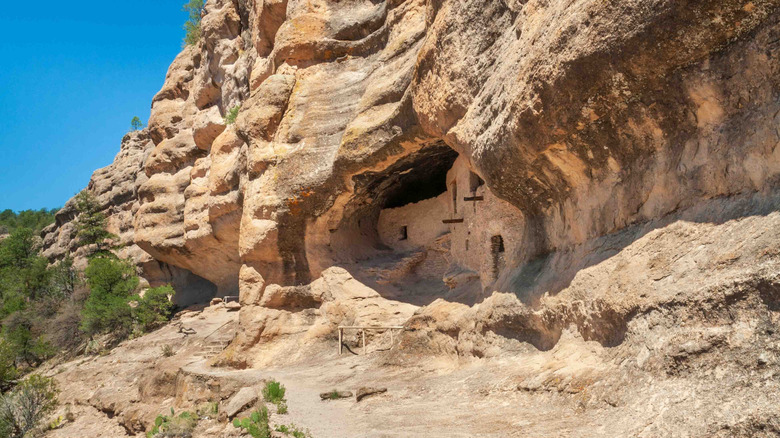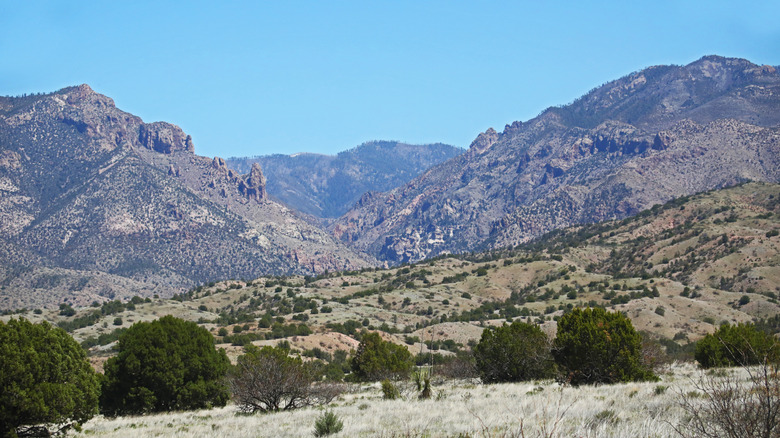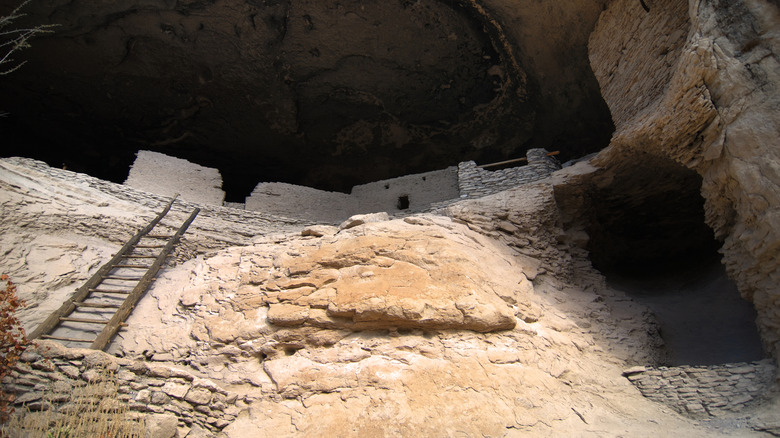New Mexico's Extraordinary National Monument Is A Showcase Of Unique Natural Beauty And Ancient Cliff Dwellings
Six centuries before the first European American settlers carved their way through the southwestern New Mexico Gila Wilderness in search of fertile homesteading land, Native peoples were busy constructing advanced cliff dwellings and leading complex lives there, characterized by ceremony, arts, commerce, and agriculture.
These were the Mogollon people, a Southern Ancestral Pueblo culture named for the nearby Mogollon Mountains, who inhabited the 42-room site that is now the Gila Cliff Dwellings National Monument between A.D. 1260 and 1300. This clan of 8 to 10 families saw opportunity here: The Gila River at the base of the canyon provided water, game, and an abundance of fertile soil for farming, while the stone and wooden homes were ingeniously constructed facing south, to reap the temperature-regulating benefits of winter sun and summertime shade.
These families weren't even the first inhabitants here — soot was discovered on the cave ceilings that dates back a few thousand years. However, they were the ones who left us the greatest archaeological peek into the past. Thanks to the dry climate, their carved homes remain remarkably well-preserved, with ceremonial rooms, winding staircases, pottery fragments, and even corn cob remains inviting us into a fascinating and mysterious chapter of a developing humanity's days gone by. It's not clear why these families abandoned their homes in A.D. 1300, but it's speculated that dire conditions or a desire for new frontiers were possible reasons.
Archeological marvels and natural beauty at Gila Cliff Dwellings National Monument
The national monument is open for visitors to explore the five interconnected cliffside abodes that make up the site. Make your first stop the Gila Cliff Dwellings Visitor Center, where you'll find a wealth of information about the Mogollon culture as well as the Chiricahua Apache people, who inhabited the area later on.
You'll then ascend about 180 feet up the mile-long Cliff Dwellings Trail to arrive at the caves. At the trail's end, you'll climb a couple of ladders and stone steps to arrive at the dwellings. You can easily do this alone, or deepen your experience with a free guided tour led by park rangers who will tell you all about the Mogollon's brilliant architectural knowledge, survival skills, and vast insight of the area's resources and how they were used for building, medicine, and nourishment.
The juniper and pine-forested Gila Wilderness was the country's first designated wilderness area and is a part of the Gila National Forest. It's a spectacularly rich region that, if you've come far enough to see the Monument, deserves further exploration. It's filled to the brim with 2,000 miles of trails perfect for hiking, horseback riding, or overnight backpacking trips. Thanks to a period of intense volcanic activity 30 million years ago, you'll find the undeveloped, completely natural Lightfeather Hot Springs, which can be accessed from the 20-minute Middle Fork Trail that begins at the visitor center. These mineral-rich waters have been sought out for centuries, with evidence that even the Mogollon themselves used them for their healing properties.
How to get to Gila Cliff Dwellings National Monument and tips for visiting
It will take you about an hour and a half driving down winding mountain roads to reach the monument from two of the closest towns to the area, Mimbres or Silver City, a great, underrated town brimming with art, festivals, authentic food, and a vibrant downtown. Once you leave town, cell service will drop, so make sure you have printed maps or offline directions at the ready.
It's important to keep the Leave No Trace principles in mind while visiting. The entire region has a Pack It In, Pack It Out mandate for trash, meaning there are no trash cans to leave your garbage, so you'll have to take it out with you. Spring and fall are the best times to visit the monument for optimal weather. Fall is a particularly beautiful time to visit as the leaves change, while in spring the defrosting forest bursts with delicate new life. If you'd like to add more stunning stops to your itinerary, don't miss the nearby volcano-forged City of Rocks State Park with otherworldly monoliths, and the Bandelier National Monument, "an open book of human history" full of canyons, mesas, cliffs, and petroglyphs.


